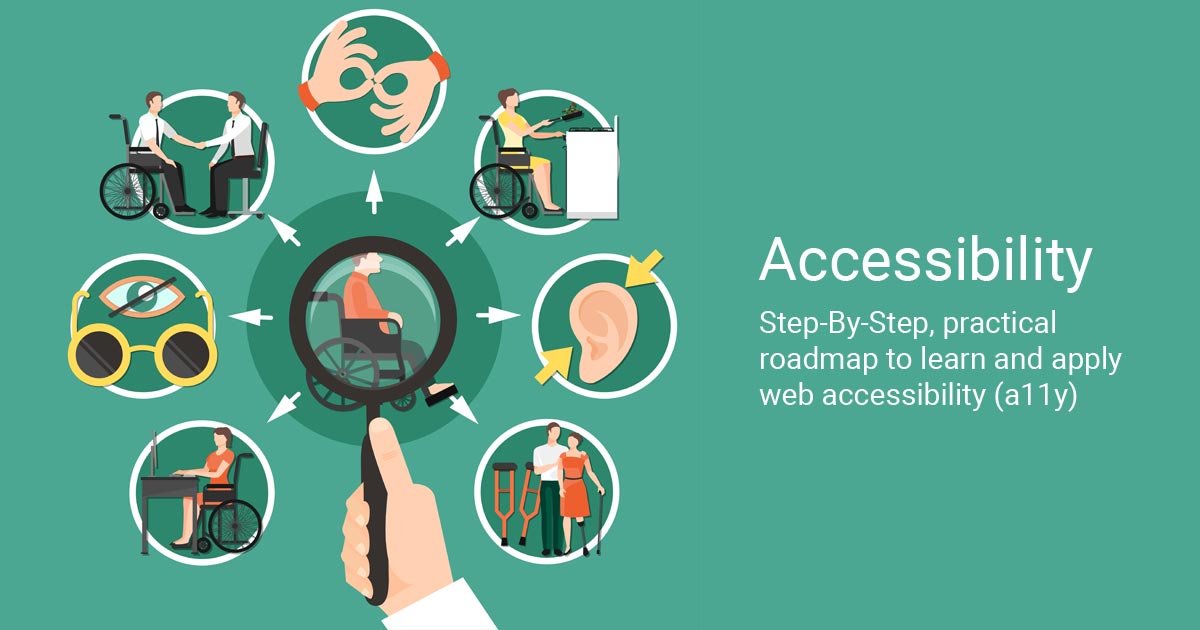What Is Web Accessibility?
Web accessibility means designing and developing websites so that people of all abilities and disabilities can use them effectively. An accessible website ensures that users with visual, auditory, motor, or cognitive impairments can perceive, understand, navigate, and interact with its content.
Why Accessibility Matters
-
Inclusive Experience: The web should be usable by everyone, regardless of physical or cognitive abilities.
-
Legal Compliance: Many countries enforce accessibility laws (such as the ADA in the U.S. or the RPwD Act in India). Non-compliance can lead to legal action.
-
Better User Experience: Accessible design benefits all users, including those on mobile devices, in noisy environments, or with slow internet connections.
-
SEO Benefits: Search engines favor well-structured, semantic content, which overlaps with accessibility best practices.
Core Principles of Web Accessibility (POUR)
The Web Content Accessibility Guidelines (WCAG) are built on four principles—POUR:
-
Perceivable: Content must be presented in ways users can perceive (e.g., text alternatives for images, captions for videos).
-
Operable: Interface components must be usable with a keyboard and provide enough time for interaction.
-
Understandable: Content and navigation should be clear and predictable.
-
Robust: Content should work reliably with assistive technologies like screen readers.
Key Accessibility Practices
-
Use Semantic HTML
-
Proper headings (
<h1>,<h2>, etc.) -
Descriptive links (avoid “click here”)
-
-
Provide Text Alternatives
-
Add
alttext for images. -
Offer transcripts and captions for audio/video.
-
-
Ensure Keyboard Navigation
-
All functionality should be available without a mouse.
-
Provide visible focus indicators.
-
-
Color & Contrast
-
Maintain a minimum contrast ratio (4.5:1 for normal text).
-
Don’t rely on color alone to convey meaning.
-
-
Forms & Labels
-
Associate
<label>elements with inputs. -
Provide clear error messages and instructions.
-
-
Responsive & Flexible Design
-
Support screen magnification and reflow.
-
Avoid fixed font sizes.
-
Tools to Check Accessibility
-
WAVE (browser extension)
-
axe DevTools
-
Lighthouse (Chrome DevTools)
-
NVDA or VoiceOver for screen-reader testing.
Steps to Get Started
For a detailed, step-by-step implementation guide, visit
👉 https://www.vitsols.com/blog.html
Here’s a quick overview to begin:
-
Audit your current website using automated tools and manual testing.
-
Prioritize issues based on WCAG 2.1 Level AA guidelines.
-
Train your design and development teams on accessibility standards.
-
Incorporate accessibility into every stage of design, development, and content creation.
Final Thoughts
Web accessibility is not just a technical requirement—it’s a commitment to equal access and digital inclusion. By building accessible websites, you not only comply with legal standards but also expand your audience and improve the overall user experience.
Start today: review your site, make incremental improvements, and embrace accessibility as a core part of your digital strategy.
